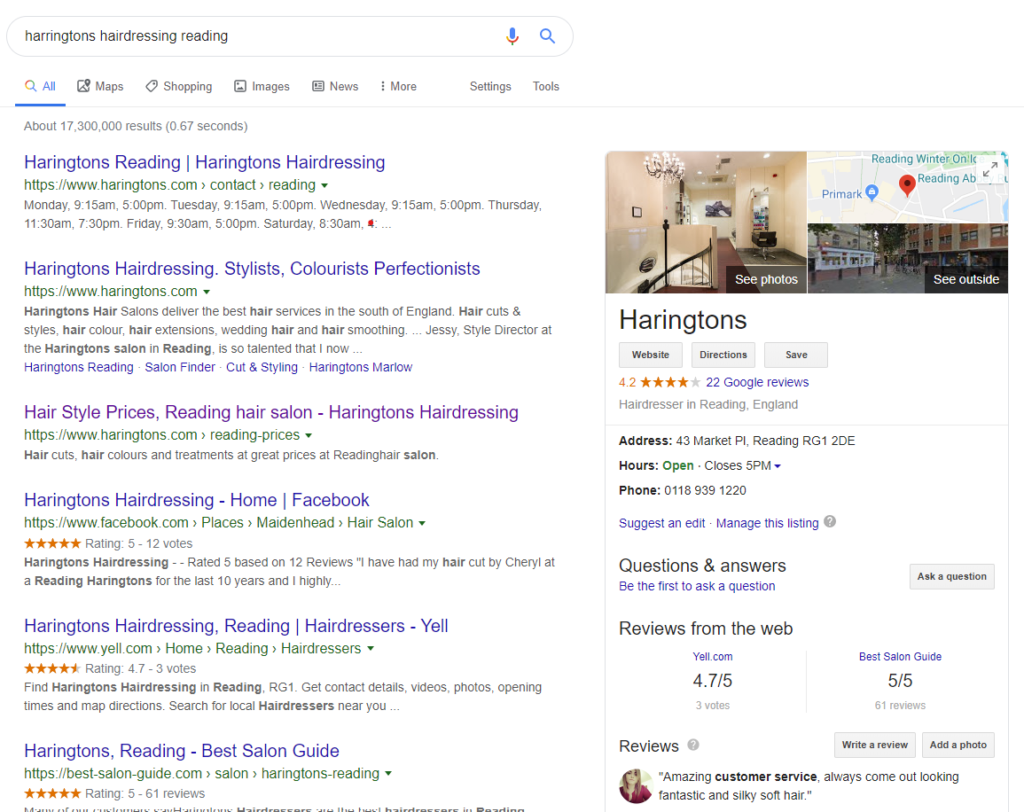So you’re starting a brand new business – congratulations! Embarking on a new business venture is always an exciting time.
Even if you’re not a particularly online business, it’s imperative that your company establishes a strong web presence.
However almost two million UK small businesses don’t have a website according to Approved Index, potentially costing them over £343bn each year. Thankfully that’s in total – not each.
So without further ado, let’s get your brand new biz found online…
1. Have a website
Many small business owners make the mistake of thinking “why go to the trouble and cost of creating a website when social media presence is free?” Though it’s important to put effort into your social visibility, a website gives you an online base of operations – a shopfront that’s uniquely your own.
Through distinct copy, design, and branding you can paint an individual picture of your business that sets you apart from your competition. Having your own website gives you control over what prospects see about you and how they get in touch with you. It also makes you seem more established, and therefore reliable.
Using social media may be free, but if the companies behind Facebook or Twitter go belly up overnight, any following you built up on those platforms would disappear in an instant. However with a website you’d still have an avenue to be found online and to communicate with your prospects.
When you have your own website, you can build up your own organic search “findability” by organically optimising your site for search. SEO is an inexpensive way to get yourself found online, and it’s quite affordable and manageable once you know how.
2. Email marketing
Let’s go back to that “Facebook gets wiped” example above – in a flick of a switch your followers could be gone. However, suppose you built a following of email subscribers instead – you’d have a confirmed database of eager parties who have agreed to hear from you.
Email is a far more decentralised concept than a single social media platform or website, so it isn’t going away in a hurry. Additionally, when you compare the noise of your average social media feed with the (somewhat) calmer focus of an email inbox – where are messages more likely to get buried?
Handing over an email address is a more involved, active signal of interest rather than passively clicking “follow”, therefore email subscribers are potentially worth more to you than your social audience.
Many email marketing tools like MailChimp and MailerLite allow you to set up free “capture pages” to allow interested parties to sign up to your mailing list, so you can start to collect addresses and generate interest for free even before your website goes live.
3. Have a social presence
I know this article’s been a bit harsh on social media so far, but being visible on social is still essential. On top of looking at a business’s website and finding online reviews, many people also search for providers on social media in order to get a feel for the brand and the people behind it. You need to start by discovering which social media platforms your ideal audience use regularly and how to best engage with them.
Social is a great place to earn fresh exposure, network with potential clients, and generally build brand presence. But simply posting to your feed isn’t the only way to engage on social – going deeper and engaging with relevant groups and hashtags can also be really fruitful. It’s important to start your own conversations, but engage with existing discussions too.
Remember that the most engaging social posts aren’t overtly promotional. Aim to provide something of value rather than a hard sell; leave your audience with a small tip or technique that they can go away and use. With thousands of businesses shouting their virtues from the rooftops, the ones that prioritise giving out practical advice stand out from the self-aggrandising noise.
4. Have listings on free sites
It’s equally important to list your company on business listing sites. Many are free to join, so you’ve got nothing to lose by signing up. Many listing sites (Yell.com included) show way more than merely name, phone number, and address. Modern listing sites worth their salt allow for a certain amount of persuasive copy, images, logos, opening hours, map locations, and – perhaps most crucially – the opportunity for previous clients to leave reviews.
In fact, Google pulls from its own Google My Business listing platform as well as trusted sites like Yell.com to provide its “knowledge panel” information (below) in search.
5. Be present
And finally, it’s essential that you not only set up these channels of communication, but you keep them updated too! Keep your website fresh with new information and blog posts; consistently send email campaigns out to your subscribers; stay active on your social media platforms (and stay aware of the changes to their algorithms); maintain your free listings; and respond to and engage with reviews that people leave for you.
None of the activities on this list should be seen as a “set it and forget it” deal, they should all be routinely maintained to keep them working at their best.






